Explore web search results related to this domain and discover relevant information.
An island country, island state, or island nation is a country whose primary territory consists of one or more islands or parts of islands. Approximately 25% of all independent countries are island countries. Island countries are historically more stable than many continental states but are ...
An island country, island state, or island nation is a country whose primary territory consists of one or more islands or parts of islands. Approximately 25% of all independent countries are island countries. Island countries are historically more stable than many continental states but are vulnerable to conquest by naval superpowers.There are great variations between island country economies: they may rely mainly on extractive industries, such as mining, fishing and agriculture, and/or on services such as transit hubs, tourism, and financial services.Many islands have low-lying geographies and their economies and population centers develop along coast plains and ports; such states may be vulnerable to the effects of climate change, especially sea level rise.The Polynesians are one of the most notable groups; they used advanced wayfinding techniques to colonize vast areas of the Pacific Ocean, including islands such as Samoa, Tonga, New Zealand, and Hawaii. These migrations occurred over centuries, showcasing remarkable seafaring capabilities in pre-modern times.Similarly, Madagascar’s population is the result of early maritime migrations from both Southeast Asia and East Africa, resulting in a unique cultural and genetic blend that reflects the island's strategic location in the Indian Ocean trade routes.

Tom McMahon and Linda Gibbs brought the Reporter on their visit to the Vietnam home of Peter Ryder, his wife Thuy and son Luke. The Ryders come “home” every year to visit brother Matt Fox in Silver Beach. Pictured above from left, Christina Pesce, Thuy, Tom, Linda, Peter, Judge Michael ...
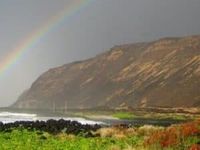
Island Info: Windward or Leeward? Perhaps you’ve heard the terms windward and leeward when referring to different parts of the Hawaiian Islands. But what
Perhaps you’ve heard the terms windward and leeward when referring to different parts of the Hawaiian Islands. But what exactly do those terms mean? If you’re not an islander, it’s not surprising if you don’t really know.All of the Hawaiian Islands have both a windward and a leeward side. In general terms, the windward side is the wet, rainy, and therefore more lush, green, and tropical section. The windward side faces North or East, where it receives the benefit of the cool, trade-wind breeze.You’ll find the lion’s share of waterfalls here, as well as the majority of the jungle-like, foliage-rich landscapes. While there’s more rainfall on the windward side of the island—that doesn’t mean you’ll never see the sun.On the other hand, the leeward side of the island faces South or West and isn’t subject to the trade-wind flow. As a result, the leeward side is generally more abundant in sunshine and less likely to be rainy or cool.

Investors include Canapi Ventures, ... Partners, Prysm Capital, Sequoia Capital, ServiceNow Ventures, and Stripes. Island is based in Dallas with research and development led from Tel Aviv. Email [email protected] or call (866) 832-7114....
Investors include Canapi Ventures, Capital One Ventures, Cisco Investments, Citi Ventures, Coatue Management, Cyberstarts, EDBI, Georgian, Insight Partners, Prysm Capital, Sequoia Capital, ServiceNow Ventures, and Stripes. Island is based in Dallas with research and development led from Tel Aviv. Email [email protected] or call (866) 832-7114.Island, the Enterprise Browser company, announced its $250 million Series E financing round. This brings Island’s valuation to $4.8 billion in less than five...As AI adoption continues to accelerate, Island is helping establish a new industry standard. Companies of all sizes should now rely on secure environments like Island to remain competitive and protect their operations.DALLAS--(BUSINESS WIRE)--Island, the Enterprise Browser company, announced its $250 million Series E financing round.

Know Before You Go Know Before You Go Planning a trip to Marco Island? Whether you’re visiting for the first time or are a longtime resident, our Local Info guide connects you to the resources you need to enjoy paradise with ease. From emergency services and
With over 30 years as Marco Island's trusted visitor guide, we make it simple to navigate the island like a local. Use this page as your go-to reference for reliable information that helps you stay informed, safe, and connected during your time on Marco Island.Marco Island is home to some of Florida's most beautiful beaches — and some of its best shelling. Get the inside scoop on where to go for calm waters, family-friendly sands, or a morning shell hunt. Plan your beach walks, shelling excursions, and golden hour moments with our up-to-date tide charts and sunset times. Click below to find up-to-date tide and sunset information, so you're always in sync with the island's rhythms.While Marco Island doesn't have a traditional centralized visitor center, The Marco Review serves as the island's premier digital visitor guide. It offers insider tips, an interactive map, restaurant recommendations, beach access info, and local event listings—all available online or via app.Planning a trip to Marco Island? Whether you're visiting for the first time or are a longtime resident, our Local Info guide connects you to the resources you need to enjoy paradise with ease.
The Pergamon Museum is to be linked to the Bode Museum, the New Museum and the Old Museum by an archaeological promenade. The Cologne architect Oswald Mathias Ungers won the architectural competition for the redesign of the museum complex on the so-called Berlin Museum Island.
View the embedded image gallery online at: https://www.alaturka.info/en/italy/verona/188-deutschland/nordrhein-westfalen/5733-sirince-and-bugarach-escape-from-the-end-of-the-world/en/germany/berlin/5658-the-pergamon-museum-on-museum-island-berlin/amp#sigProId2239ff013d

An island or isle is a piece of land, distinct from a continent, completely surrounded by water. There are continental islands, which were formed by being split from a continent by plate tectonics, and oceanic islands, which have never been part of a continent.
Oceanic islands can be formed from volcanic activity, grow into atolls from coral reefs, and form from sediment along shorelines, creating barrier islands. River islands can also form from sediment and debris in rivers.Islands are host to diverse plant and animal life. Oceanic islands have the sea as a natural barrier to the introduction of new species, causing the species that do reach the island to evolve in isolation. Continental islands share animal and plant life with the continent they split from.Humans have lived on and traveled between islands for thousands of years at a minimum. Some islands became host to humans due to a land bridge or a continental island splitting from the mainland, or by boat travel. In the far north or south some islands are joined by seasonal or glacial ice.Islands became the target of colonization by Europeans, resulting in the majority of islands in the Pacific being put under European control. Decolonization has resulted in some but not all island nations becoming self-governing, with lasting effects related to industrialisation, invasive species, nuclear weapons testing, and tourism.
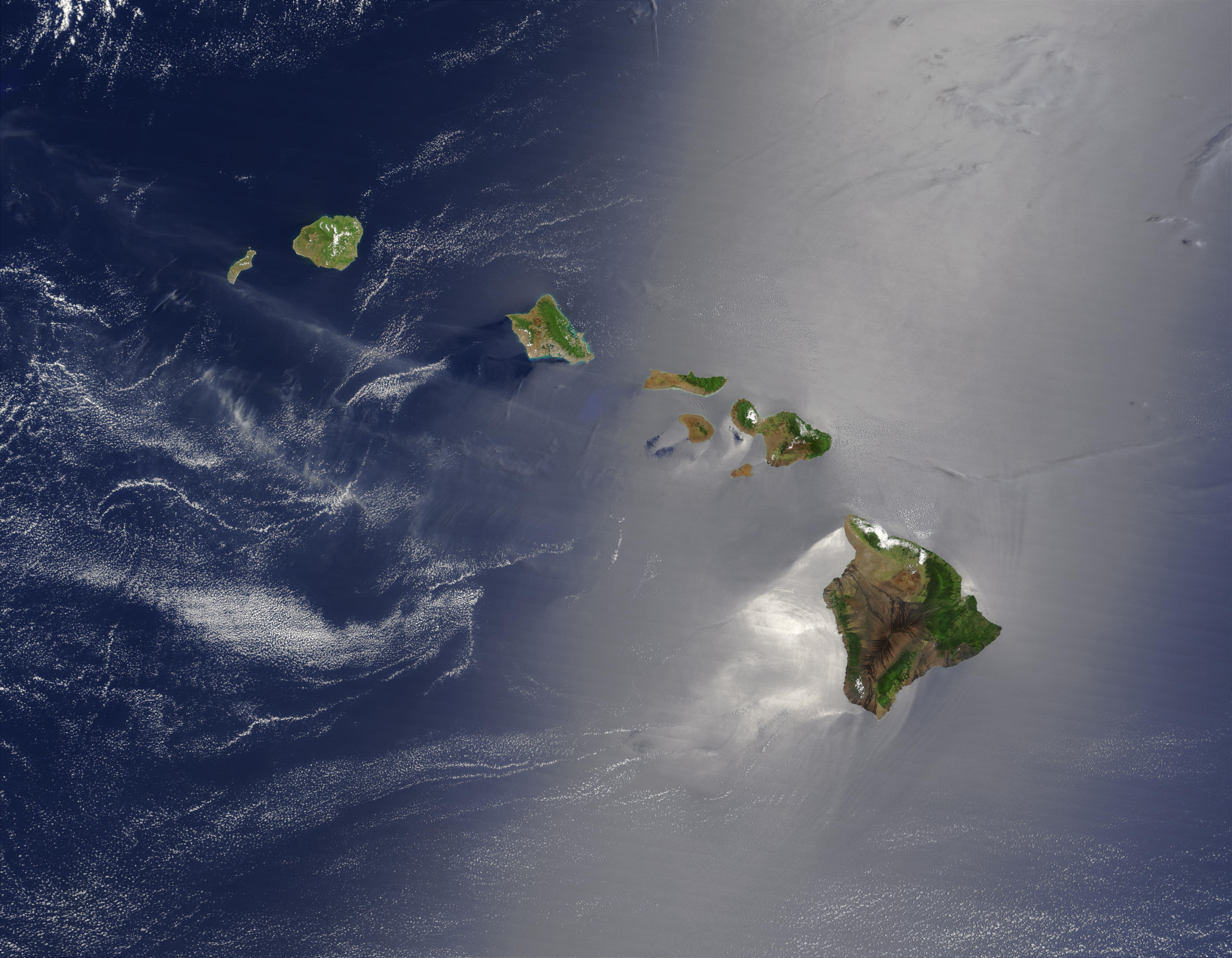

An island is an area of land that is surrounded by water. Islands can be found in all bodies of water, from streams and rivers to lakes, seas, and oceans. The two main types…
Oceanic islands are the tops of underwater volcanoes. An oceanic island forms when a volcano erupts deep under the ocean and pushes the ocean floor upward into a mountain. The island is the top of that mountain.Atolls are another type of island in the ocean. An atoll is a ring of land around a shallow body of water called a lagoon. Atolls form when corals build a colony, or reef, around the top of a volcanic island. Eventually the reef reaches the surface of the water and becomes land.Continental islands are close to the continents. They are parts of the same land that makes up the continents. One way that continental islands form is by the flooding of valleys close to the coast. The valleys fill with seawater, and the tops of nearby hills then become islands.Do Not Sell My Info ©2025 Encyclopædia Britannica, Inc.
All the information you need for planning a trip to Block Island can be found here! Block Island is 13 miles off the coast of Rhode Island, but a world away. Start planning your vacation today.
If you’re dreaming of crisp ocean breezes, peaceful landscapes, and time spent in nature, Block Island is the perfect fall escape.Summer is in full swing on Block Island!
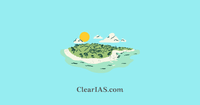
An island may occur individually or in a group and can be found in open oceans or seas. Islands are also found in lakes or rivers.
Phumdis are a collection of floating islands that are unique to the Loktak Lake in the northeastern Indian state of Manipur. The largest single mass of Phumdi is in the southeastern part of the lake, covering an area of 40 km2. The Keibul Lamjao National Park, the largest floating park in the world located in this area is made up of this mass. Article Written By: Priti Raj · 🌟 Share this Information!🌟 ·A piece of land surrounded by water is termed an island.Check the article below to learn all about the Islands.The government established the Island Development Agency (IDA), an apex agency with the responsibility of directing the program for the holistic development of islands.

Based on Wikipedia’s list of U.S. islands ordered by area, the map includes islands ranging from just 3.7 square miles (approximately 9.7 km 2) to 4,028 square mile-islands (10,433 km 2). The data also contains population information gathered either in 2010 or 2000.
Explore the U.S.'s 155 Islands - BatchGeo - The Fastest way to map dataWhile just about any vacation is appreciated, many consider an island getaway as the pinnacle of relaxation. Islands like The Hawaiian Islands are a frequent vacation or wedding destination for a reason. But the U.S.If you spend any amount of time working with information, such as addresses or sales numbers, you’ll know that this information isn’t always perfectly neat.We’ll cover the U.S.’s 155 islands—from the largest to the smallest (sometimes called islets)—and every island in between.
Expansive Glaciers. Shimmering Northern Lights. Hot springs and geysers. Vibrant culture and Viking history. Vast volcanic landscapes and black sand beaches.
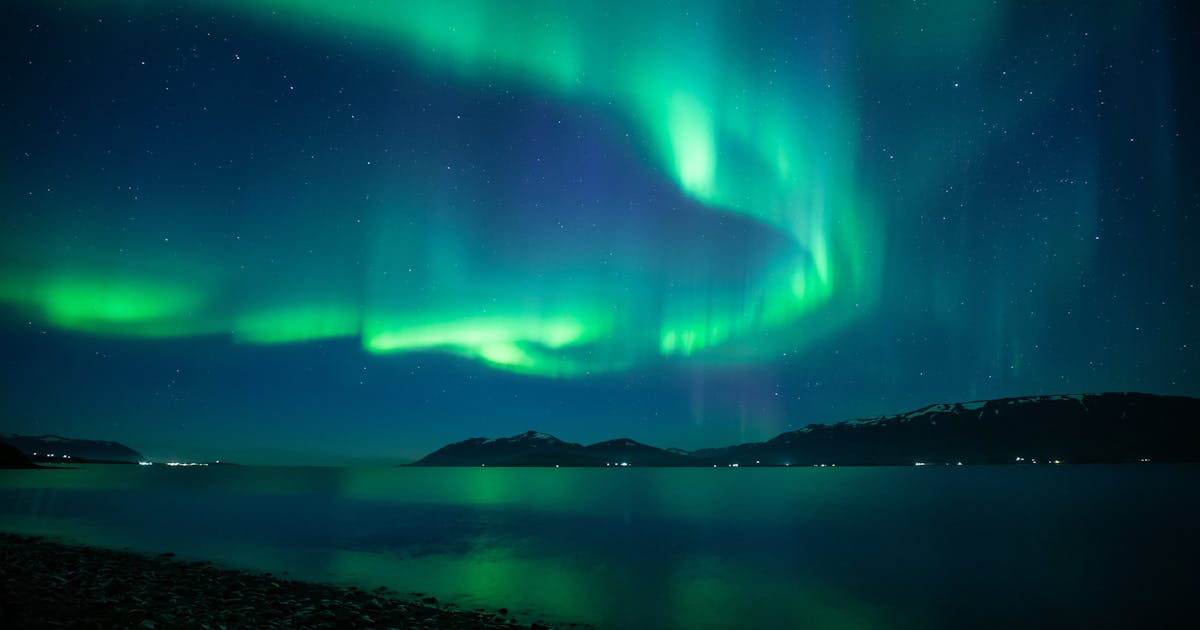
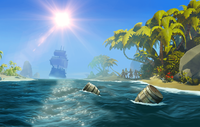
Islands are land locations that serve as some of the most common destinations for Quests and World Events.
Page information · Database data · Cite this page · Español · From Sea of Thieves Wiki · Jump to navigation Jump to search · Location · Islands are land locations that serve as some of the most common destinations for Quests and World Events. 1 List of regional islands ·Skeleton Forts are islands fortified with structures built by skeleton forces. These locations can host the Skeleton Fort or Fort of Fortune raid style world events, while the more unique Fort of the Damned raid hosted solely at the Fort of the Damned island.There are 74 charted islands found across the named regions of The Sea of Thieves split across 25 large islands, 39 small islands, and 10 Skeleton Forts.This does not include Sea Forts, Seaposts, Outposts, or Siren Shrines / Treasuries as these are not classified as Islands within the Master Explorer seasonal trial.
Island, any area of land smaller than a continent and entirely surrounded by water. Islands may occur in oceans, seas, lakes, or rivers. A group of islands is called an archipelago. Islands may be classified as either continental or oceanic. Learn more about islands in this article.
Islands may be classified as either continental or oceanic. Oceanic islands are those that rise to the surface from the floors of the ocean basins. Continental islands are simply unsubmerged parts of the continental shelf that are entirely surrounded by water.Likewise the world’s second largest island, New Guinea (309,000 square miles [800,000 square km]), is part of the Australian continental platform and is separated from it only by the very shallow and narrow Torres Strait.A slight warping of the sea bottom in the vicinity of Torres Strait would be sufficient to join New Guinea to Australia; conversely, a slight rise in sea level may submerge a hilly coast and leave the hilltops remaining as small islands just offshore (such as those off the coast near Boston and the islands off the Maine coast).Island life exhibits features of special interest. The sea is a barrier to some forms of life but acts as a carrier of others, which, once established in their new home, frequently develop new features in their isolated surroundings. A long-established sea barrier results in marked differences between the animal life and vegetation even of adjacent islands, and from these differences may be deduced the origin of an island.

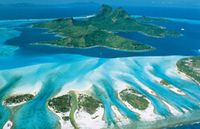
An island is a body of land that is surrounded by water. Some islands are found in rivers, lakes, and ponds, but most islands are in oceans. Some islands, such as Madagascar—which is off the east coast of Africa—are nations. Others are made up of two nations.
For example, the island of Hispaniola in the Caribbean Sea is shared by Haiti and the Dominican Republic. Some islands are part of a larger nation. Sumatra is one of many islands that form the nation of Indonesia. Some islands are colonies or territories of other nations.These two vastly different places have one thing in common. Both are islands.The island of Puerto Rico is associated with the United States, but it is not a state.
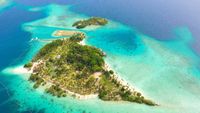
Discover the U.S. Minor Outlying Islands, remote territories in the Pacific and Caribbean with ecological, historical, and strategic significance. Learn about their history, geography, and interesting facts, including their role in WWII and current status as wildlife refuges.
The U.S. Minor Outlying Islands are a group of nine very remote, unincorporated territories straddling the Pacific Ocean and the Caribbean Sea. While many people do not think of them this way, these small islands deserve attention because of their ecological, historical, and strategic significance.The bulk of these islands were taken under sovereign claim by the U.S. in the 19th century under the Guano Islands Act. Later, the islands played pivotal roles in World War II, especially Midway Atoll and Wake Island.The United States Minor Outlying Islands are linked to resource extraction, military doctrine, and conservation. They were primarily claimed by the United States during the middle of the 1800s, under the Guano Islands Act, which enabled the U.S. to acquire islands with guano found on them.Currently, many of the islands have been declared wildlife refuges to protect the rare species, including coral reef ecosystems. While the federal agencies like the U.S.
Explore Island H2O's thrilling attractions with flexible hours to fit your schedule! Check our site for the latest opening times.
Island H2O Water Park opens for the 2025 Season on March 7th! ... Operating dates and times are subject to change without notice. The park is closed to the public on days without hours listed. Mobile users, please click on a specific date to view operating hours. Please see our FAQs for information about weather and other important topics.Island Nights: Live! Edition ft. Quavo Sept.Island Nights: Live! Edition ft. Offset - Oct.
Islands.com covers everything you want to do and anywhere you want to travel with expert info, in-depth guides, local tips, and more.
Islands.com | Expert Travel Info & Tips: From Islands, to Mountains, & Everything In Between

An island is a body of land surrounded by water. Continents are also surrounded by water, but because they are so big, they are not considered islands. Australia, the smallest continent, is more than three times the size of Greenland, the largest island. There are countless islands in the ocean, ...
Hawaii Department of Education: Ainakumuwai: Ahupua'a of Nawiliwili Bay—Island FormationNational Park Service: Channel Islands National Park—Geology Field Notes · The audio, illustrations, photos, and videos are credited beneath the media asset, except for promotional images, which generally link to another page that contains the media credit. The Rights Holder for media is the person or group credited. ... For information on user permissions, please read our Terms of Service.An island is a body of land surrounded by water. Continents are also surrounded by water, but because they are so big, they are not considered islands. Australia, the smallest continent, is more than three times the size of Greenland, the largest island. There are countless islands in the ocean, lakes, and rivers around the world.They vary greatly in size, climate, and the kinds of organisms that inhabit them. Many islands are quite small, covering less than half a hectare (one acre). These tiny islands are often called islets. Islands in rivers are sometimes called aits or eyots. Other islands are huge.Greenland, for example, covers an area of about 2,166,000 square kilometers (836,000 square miles). Some islands, such as the Aleutian Islands in the U.S. state of Alaska, are cold and ice-covered all year. Others, such as Tahiti, lie in warm, tropical waters.

INCLUDING EASTER ISLAND IN A ROUND ... numerous options for visiting the island as part of a South American Airpass, Circle Pacific fare, or Round The World (RTW) ticket are best explained by a travel agent with good and up-to-date information....
INCLUDING EASTER ISLAND IN A ROUND THE WORLD TRIP - Ever since LATAM was incorporated into the Oneworld Alliance in 2001, many people started choosing to include this once-inaccessible island, and to visit Easter Island as an exciting stopover on their world tour. The numerous options for visiting the island as part of a South American Airpass, Circle Pacific fare, or Round The World (RTW) ticket are best explained by a travel agent with good and up-to-date information.ISLAND INFORMATION Climate - Easter Island enjoys a sub-tropical climate and is therefore a year-round destination. Temperatures in summer (Dec - Mar) rarely exceed 28°C (83°F), while in winter they never drop below 15°C (60°F). The island receives 45 inches of rain per year (compared to Tahiti's annual rainfall of about 80 inches).The island was colonized sometime between AD 800 and AD 1200 by Polynesian voyagers from the west. Within about a thousand years, these new settlers would carve their irreversible mark on the island and change its landscape forever. Overpopulation combined with the island’s limited space and resources made dramatic alteration all but inevitable.The natives of Easter Island are generous people with brown skin, dark hair, and an expressive nature. They have an incredible artistic talent which is notably seen in their world-class music and carvings found on the island today. They are direct descendants of the first Polynesians who arrived on Rapa Nui more than a thousand years ago, having enjoyed an unbroken presence on the island ever since.





